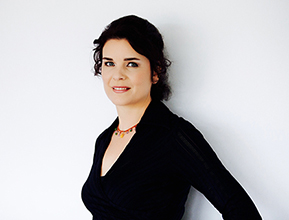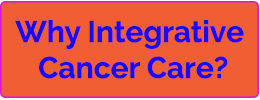What is osteopathy?
Osteopathy is a therapy addressing the whole person. Andrew Taylor Still, MD, DO, from Missouri in the United States, founded osteopathic medicine in the early 1870s. He was frustrated with many aspects of healthcare. Dr. Still introduced a new philosophy of medicine with osteopathic manipulative treatment, including Hippocrates insights to focus on the unity of all body parts. During his process, he realized that optimal health is possible only when all of the tissues and cells of the body function together in harmonious motion.
How could that be accomplished? Dr. Still proved that he could restore health by treating the body with his hands, which included invigorating each individuals’ innate healing capacity. He understood very clearly that the human body is indeed composed of many parts—and all intimately interacted as a functional whole. Along with his treatment, he recommended eating well and keeping fit with exercise. Moreover, Dr. Still recognized that the human being is more than a physical body. His vision continued to create a new medicine system with relationships between the body, mind, emotions and spirit.
Dr. Still founded the world’s first osteopathic medical school called American School of Osteopathy—now A.T. Still University—in Kirkville, Missouri, for people to become fully licensed physicians as a Doctor of Osteopathic Medicine (DO). Many people do not know that there are only two types of trained physicians— osteopathic doctors (DOs) and medical doctors (MDs). Today, osteopathic physicians have been trained and practice in many locations around the world. In Australia, osteopathy has been practiced for over 100 years and taught in universities since the early 1980s.
Osteopathic physicians are trained to use Osteopathic Manipulative Treatment (OMT) that is a manual medicine technique. The osteopathic physician uses OMT to help restore musculoskeletal balance, which improves the flow of fluids in the body. Specifically, osteopathic physicians can support the immune system, circulation, nervous system, lymphatics, joints, tissues, organs, and other functions. Goals include to improve wellness through a holistic whole person approach, invigorate health and self-healing, help with prevention, as well as address disease and disease-related issues.
What training is required to become an osteopath? What are the similarities and difference between an osteopathic physician (DO) and medical doctor (MD)?
The following information comes from the American Osteopathic Association.
Alike: Students entering both DO and MD medical colleges typically have already completed four-year bachelor’s degrees with an emphasis on scientific courses. They both complete four years of basic medical education.
Different: Osteopathic medical schools emphasize training students to be primary care physicians and to practice a “whole person” approach to medicine instead of just treating specific symptoms or illnesses.
Alike: After medical school, both MDs and DOs obtain graduate medical education through such programs as internships and residencies, which typically last three to eight years and prepare DOs and MDs to practice a specialty. Both DOs and MDs can choose to practice in any specialty of medicine—such as pediatrics, family medicine, psychiatry, surgery or ophthalmology. DOs and MDs must pass comparable examinations to obtain state licenses. They both practice in accredited and licensed health care facilities.
Different: Unlike MDs, DOs receive extra training in the musculoskeletal system—the body’s interconnected system of nerves, muscles and bones, providing them with an in-depth understanding of the ways that illness or injury in one part of the body can affect another. With this knowledge, DOs incorporate osteopathic manipulative treatment (OMT) into their patient care, using their hands to diagnose illness and injury and to encourage the body’s natural tendency toward good health.
What are some study results about OMT?
OMT has been used to treat a variety of health conditions. Many studies have been conducted with compelling results. Scientific evidence demonstrates OMT as most effective for back and neck pain, which for some patients can then reduce the amount of pain medication. While most of these osteopathy clinical trials did not directly treat cancer patients, the study results provide compelling information since people affected by cancer endure some of these conditions.
Surgery and pain are two common experiences with some cancer patients. Although this study addresses a different condition, evaluation after surgery show pain during the postoperative course decreased significantly by OMT (1). In a systematic review and meta-analysis of randomized controlled trials, 6 trials focused on people with low back pain provided 8 OMT sessions vs control treatment comparisons. OMT significantly reduced low back pain regardless of whether trials were performed in the United Kingdom or the United States. The level of pain reduction is greater than expected from placebo effects alone, and the study showed it persisted for at least three months (2). Additionally, a randomized double-blind, sham-controlled trial recently occurred addressing several hundred people with chronic low back pain to determine the efficacy of 6 OMT sessions over 8 weeks. Results show that the OMT regimen provided significant and clinically relevant measures for recovery from chronic low back pain (3).
The cancer journey often has some challenges with emotions around dealing with a disease, side effects from treatment, short and long-term effects, side effects from drugs, and other factors. As a potential result, depression and migraines can sometimes happen for people affected by cancer. Although cancer patients are not included in these studies, results show that both depression and migraines were reduced by osteopathy treatments.
In a randomized controlled clinical trial, a small group of patients with depression were randomly assigned to receive standard of care OMT or standard of care placebo. All subjects in the OMT group reverted to normal Zung Depression Scale scores compared to only 33 percent of those in the placebo group by week 8. This study indicates that OMT may be a useful adjunctive treatment for alleviating depression (4).
Another study suggests that OMT is effective in improving quality of life in migraine patients as compared to sham therapy and usual care. Specifically, results explain the use of 8 osteopathic sessions over a 6-month period to significantly reduce the use of drugs, pain, and disability (5).
Bottom Line:
Many improvements to the body, mind, and spirit are essential when dealing with cancer and supporting health. Consider adding osteopathy to your treatment care plan. Search for osteopathic physicians in your area. Ask questions about their experience, expertise, and how they can address your situation. Know that new strategies for your health and healing are available right now.
For More Information
References
1. Pascal Probst, Elena Büchler, Colette Doerr-Harim, Phillip Knebel, Bettina Thiel, Alexis Ulrich, Markus K. Diener. Randomised controlled pilot trial on feasibility, safety and effectiveness of osteopathic MANipulative treatment following major abdominal surgery (OMANT pilot trial). International Journal of Osteopathic Medicine. Volume 20, June 2016, Pages 31–40.
2. Licciardone JC, Brimhall AK, King LN. Osteopathic manipulative treatment for low back pain: a systematic review and meta-analysis of randomized controlled trials. BMC Musculoskelet Disord. 2005 Aug 4;6:43. Review. PubMed PMID: 16080794; PubMed Central PMCID: PMC1208896.
3. Licciardone JC, Gatchel RJ, Aryal S. Recovery From Chronic Low Back Pain After Osteopathic Manipulative Treatment: A Randomized Controlled Trial. J Am Osteopath Assoc. 2016 Mar 1;116(3):144-55. doi: 10.7556/jaoa.2016.031. PubMed PMID: 26927908.
4. Plotkin BJ, Rodos JJ, Kappler R, Schrage M, Freydl K, Hasegawa S, Hennegan E, Hilchie-Schmidt C, Hines D, Iwata J, Mok C, Raffaelli D. Adjunctive osteopathic manipulative treatment in women with depression: a pilot study. J Am Osteopath Assoc. 2001 Sep;101(9):517-23. PubMed PMID: 11575038.
5. Cerritelli F, Ginevri L, Messi G, Caprari E, Di Vincenzo M, Renzetti C, Cozzolino V, Barlafante G, Foschi N, Provinciali L. Clinical effectiveness of osteopathic treatment in chronic migraine: 3-Armed randomized controlled trial. Complement Ther Med. 2015 Apr;23(2):149-56. doi: 10.1016/j.ctim.2015.01.011. Epub 2015 21. PubMed PMID: 25847552.





